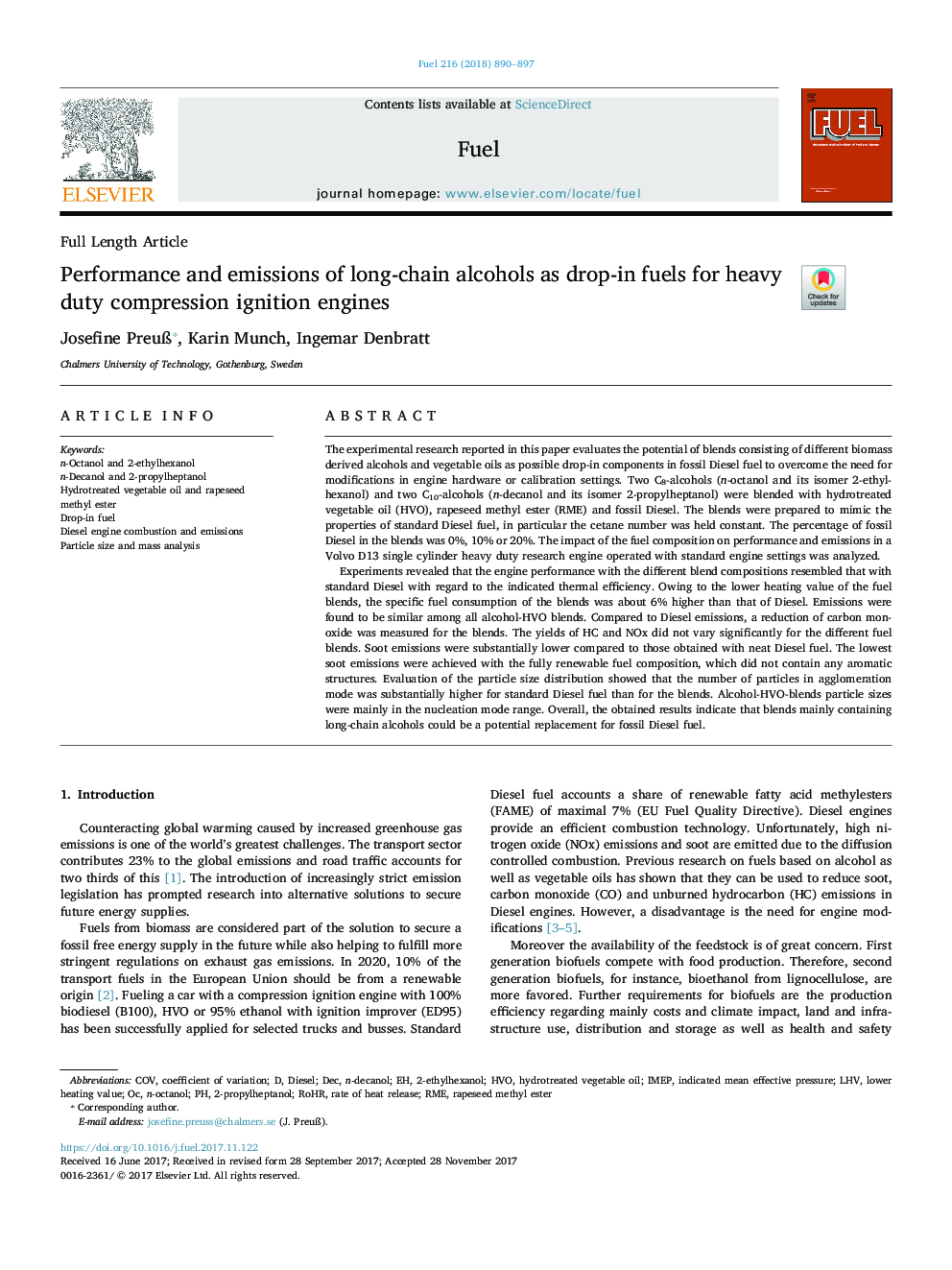| Article ID | Journal | Published Year | Pages | File Type |
|---|---|---|---|---|
| 6632272 | Fuel | 2018 | 8 Pages |
Abstract
Experiments revealed that the engine performance with the different blend compositions resembled that with standard Diesel with regard to the indicated thermal efficiency. Owing to the lower heating value of the fuel blends, the specific fuel consumption of the blends was about 6% higher than that of Diesel. Emissions were found to be similar among all alcohol-HVO blends. Compared to Diesel emissions, a reduction of carbon monoxide was measured for the blends. The yields of HC and NOx did not vary significantly for the different fuel blends. Soot emissions were substantially lower compared to those obtained with neat Diesel fuel. The lowest soot emissions were achieved with the fully renewable fuel composition, which did not contain any aromatic structures. Evaluation of the particle size distribution showed that the number of particles in agglomeration mode was substantially higher for standard Diesel fuel than for the blends. Alcohol-HVO-blends particle sizes were mainly in the nucleation mode range. Overall, the obtained results indicate that blends mainly containing long-chain alcohols could be a potential replacement for fossil Diesel fuel.
Keywords
Related Topics
Physical Sciences and Engineering
Chemical Engineering
Chemical Engineering (General)
Authors
Josefine PreuÃ, Karin Munch, Ingemar Denbratt,
